Discover 11 hidden attractions, cool sights, and unusual things to do in Joshin'etsukogen National Park (Japan). Don't miss out on these must-see attractions: Mount Asama, Naeba, and Yonako Falls. Also, be sure to include Mount Azumaya in your itinerary.
Below, you can find the list of the most amazing places you should visit in Joshin'etsukogen National Park (Nagano).
Table of Contents
Mount Asama
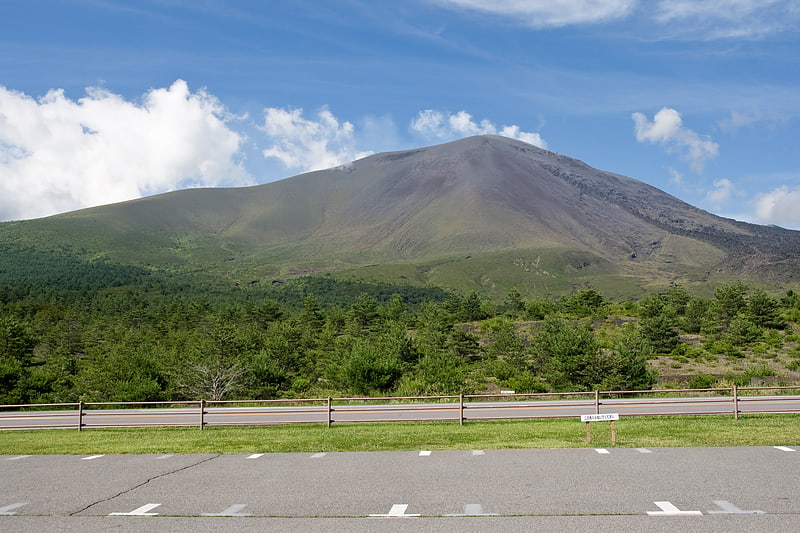
Also known as: 浅間山
Complex volcano in Japan. Mount Asama is an active complex volcano in central Honshū, the main island of Japan. The volcano is the most active on Honshū. The Japan Meteorological Agency classifies Mount Asama as rank A. It stands 2,568 metres above sea level on the border of Gunma and Nagano prefectures. It is included in 100 Famous Japanese Mountains.[1]
Naeba

Also known as: 苗場山
Mount in Japan. Mount Naeba is a stratovolcano on the border of Nagano and Niigata prefectures in central Honshū, Japan. It is about 200 km from Tokyo. It was active between 200,000 and 800,000 years ago. It is primarily made of andesite.[2]
Yonako Falls
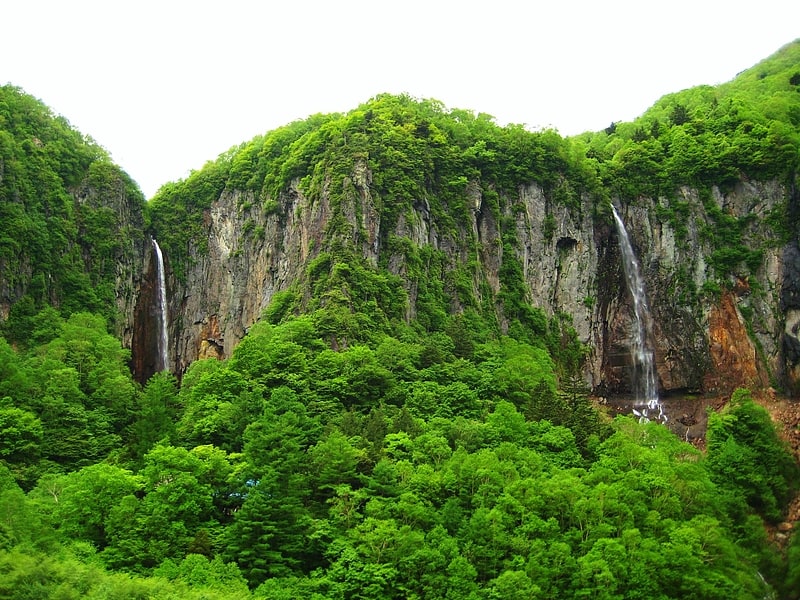
Also known as: 米子大瀑布
Scenic spot in Suzaka, Japan. Yonako Falls, literally "Yonako Large Waterfalls") is a waterfall located in Yonako, Suzaka City, Nagano Prefecture, in the central part of Japan.[3]
Mount Azumaya
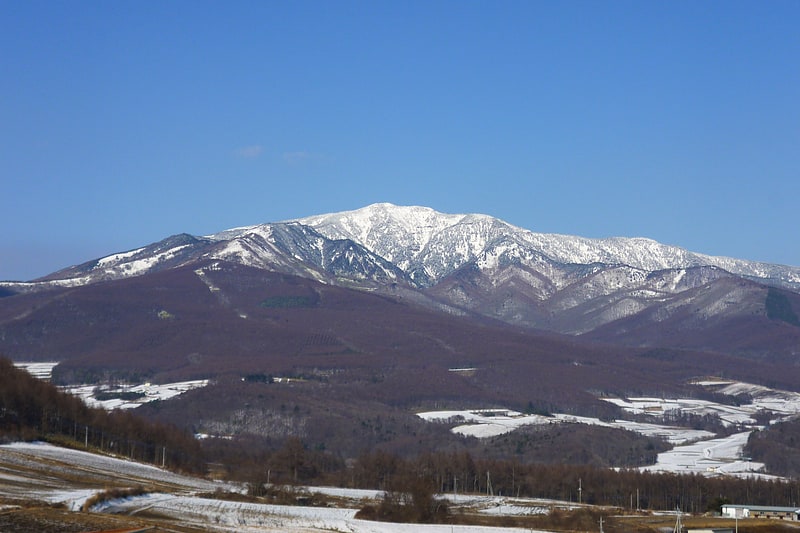
Also known as: 四阿山
Mountain in Japan. Mount Azumaya is one of the 100 Famous Japanese Mountains. The 2,354-metre-high peak lies on the border of Nagano Prefecture and Gunma Prefecture. There exist alternative spellings of the mountain's name, like: 吾妻山 and 吾嬬山 which is read as "Agatsuma-yama". In the village Tsumagoi, the mountain is spelled 吾妻山.
The mountain should not be confused with Mount Azumaya (四阿屋山, Azumaya-san) of which there are two, one in Nagano Prefecture and the other in Saitama Prefecture. Though the reading is the same, the name written in Kanji differs from the mountain in this article.[4]
Asama Volcano Museum
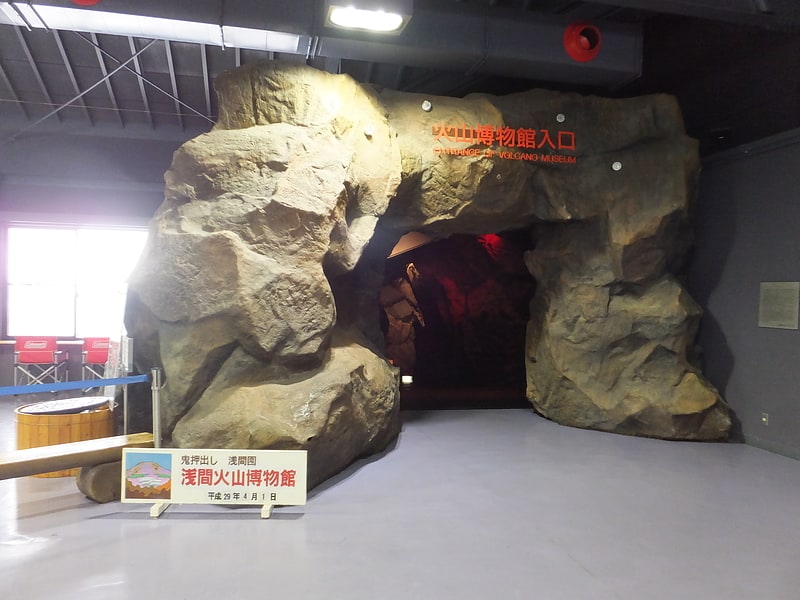
Also known as: 浅間火山博物館
Museum. The Asama Volcano Museum, 4 km from the crater of the active complex volcano Mount Asama in Japan, open from 1993 to 2020, explained volcanoes.
The museum was in Naganohara-machi, Agatsuma-gun, Gunma Prefecture. As of early 2009, it was open from April until November.
Visitor numbers peaked at 265,000 in 1994; however, seismic activity at nearby Mount Asama was one reason for frequent closures. The closures were a factor in the drop in visitors: this gradually fell to 23,000. In the later years of the museum, most of the visitors were on school excursions. The museum was running a deficit of about 17 million yen per year, paid for by the town of Naganohara. Additionally, the building was ageing, and maintenance threatened to cost hundreds of millions of yen.
A nearby building, Asama memorial hall (浅間記念館) exhibited motorbikes; the plan in summer 2020 was to move these to a municipally owned tourist facility, Asama pasture (浅間牧場), and to move some of the exhibits of the volcano museum to the memorial hall.[5]
Address: 1053-26, Kanbara, 377-1524 Tsumagoi-mura
Mount Hiuchi
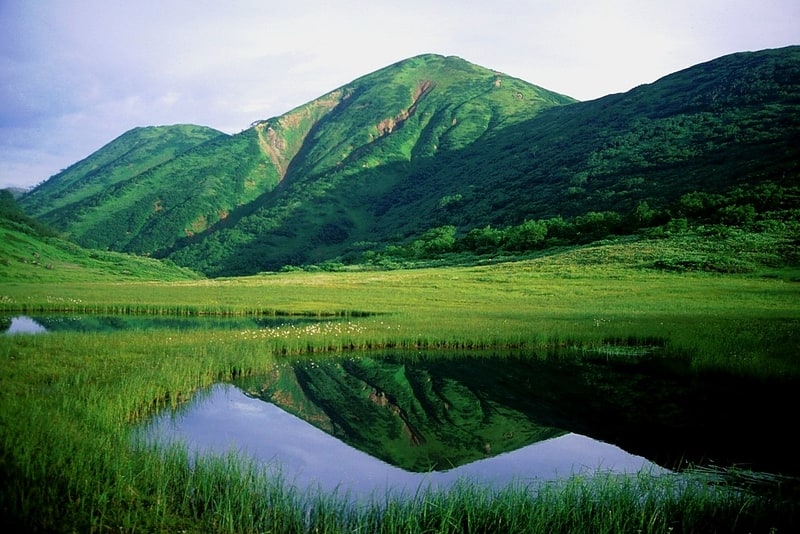
Also known as: 火打山
Mountain in Japan. Mount Hiuchi is one of the 100 Famous Japanese Mountains, reaching the height of 2,462 m. It is situated in Japan's Kubiki Mountains in Niigata Prefecture. It was specified for Jōshin'etsu Kōgen National Park on July 10, 1956, but since has been absorbed by the Togakushi-Renzan National Park, which encompasses Mount Myōkō and Mount Niigata-Yake.[6]
Niigata-Yakeyama
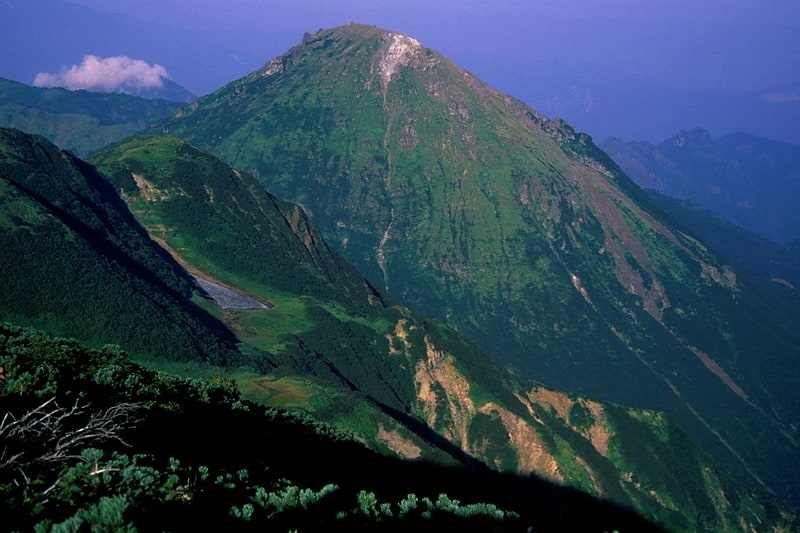
Also known as: 新潟焼山
Volcano in Japan. Niigata-Yake-Yama is an active volcano in Honshu, Japan. A large eruption in 887 AD sent pyroclastic flows all the way to the Japan Sea.[7]
Mount Kusatsu-Shirane
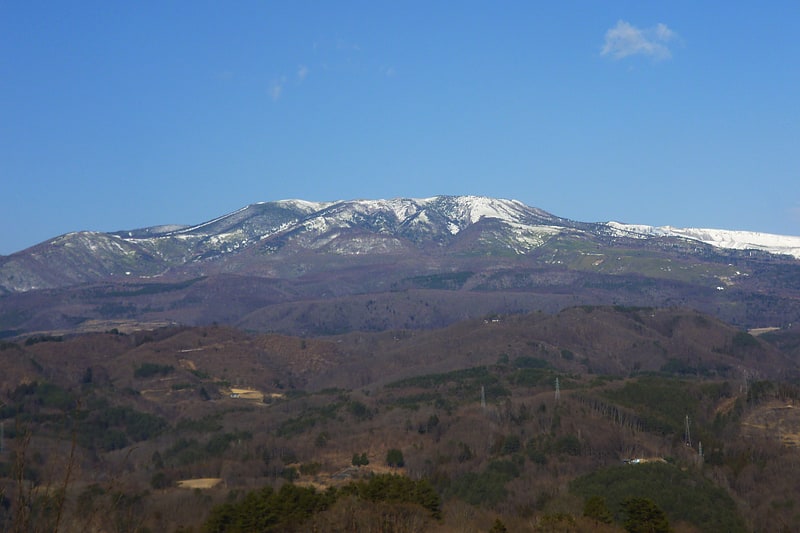
Also known as: 草津白根山
Stratovolcano in Japan. Mount Kusatsu-Shirane is a 2,160 m active stratovolcano in Kusatsu, Gunma, Japan. It is called Kusatsu Shirane to differentiate it from the Mount Nikkō-Shirane on the other side of Gunma Prefecture. The summit of Kusatsu-Shirane volcano, located immediately north of Asama volcano, consists of a series of overlapping pyroclastic cones and three crater lakes. The largest of these is Yu-gama, an acidic emerald green lake with rafts of yellow sulfur sometimes seen floating on its surface.
On January 23, 2018, a minor phreatic eruption of the volcano occurred. One person was killed, and others were injured in an avalanche triggered by the eruption. The next day, new activity forced police to suspend search operations. One month after the eruption, it was announced by prefectural officials that only the summit of the volcano was off limits to the public.[8]
Mount Myōkō
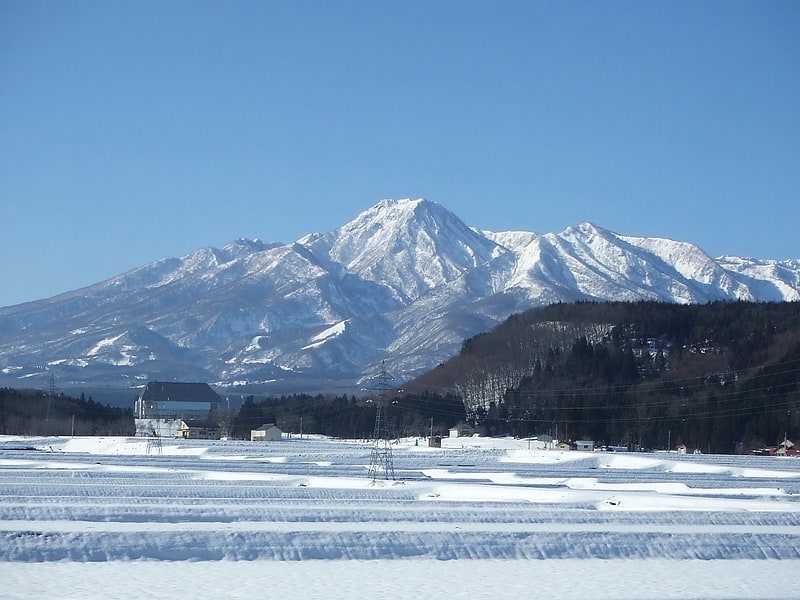
Also known as: 妙高山
Stratovolcano in Japan. Mount Myōkō is an active stratovolcano in Honshu, Japan. It is situated at the southwest of Myōkō city, Niigata Prefecture, and a part of Jōshin'etsu-kōgen National Park. Mount Myōkō is listed as one of 100 Famous Japanese Mountains, and together with Mount Yahiko, it is well known as the "famous mountain" of Niigata Prefecture.[9]
Mount Higashidate
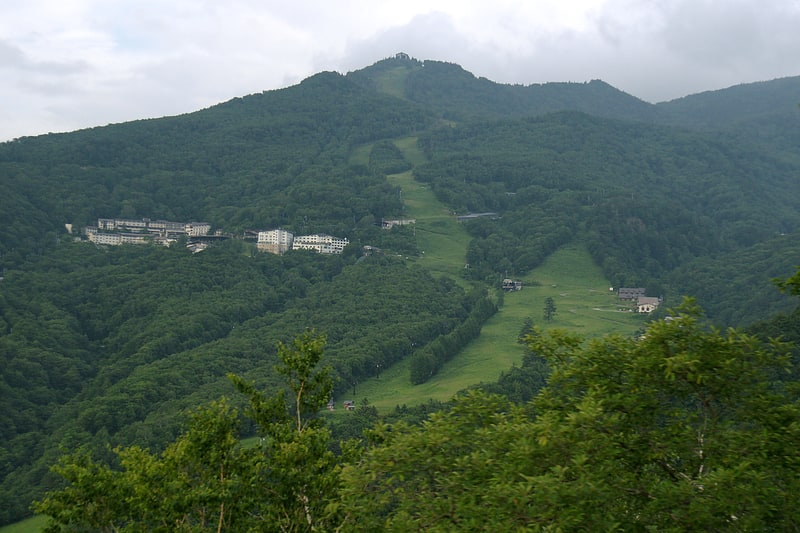
Also known as: 東館山
Mountain in Japan. Mount Higashidate is a mountain in Japan located in Yamanouchi, Nagano. For the 1998 Winter Olympics, it hosted the alpine skiing giant slalom events.[10]
Mount Asama
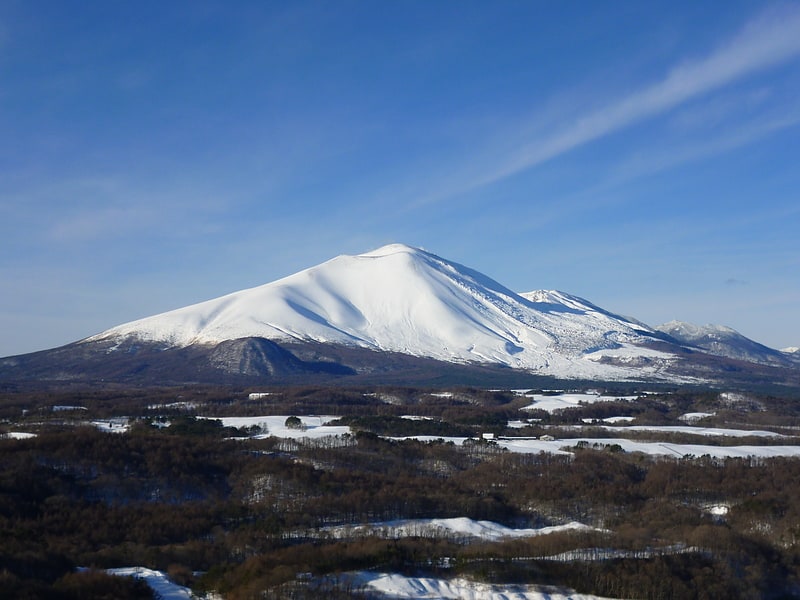
Also known as: 浅間山
Complex volcano in Japan. Mount Asama is an active complex volcano in central Honshū, the main island of Japan. The volcano is the most active on Honshū. The Japan Meteorological Agency classifies Mount Asama as rank A. It stands 2,568 metres above sea level on the border of Gunma and Nagano prefectures. It is included in 100 Famous Japanese Mountains.[11]